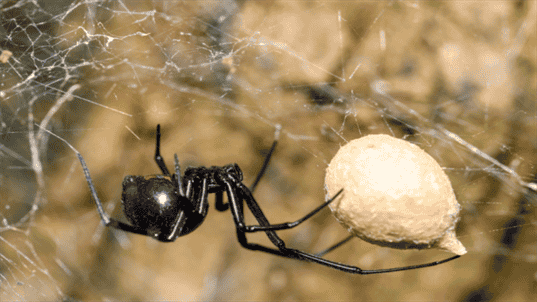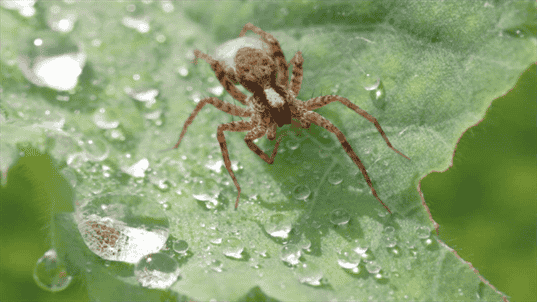Spiders of Louisiana: Exploring Arachnid Diversity
Spiders of Louisiana have fascinating spider species, from tiny jumping spiders to giant and intimidating tarantulas. Whether you’re a spider enthusiast or simply curious about the creepy-crawly creatures in your backyard, there’s plenty to discover about Louisiana’s eight-legged residents. Spiders may be one of the most misunderstood and maligned creatures in the animal kingdom, but they play an essential role in the ecosystem in Louisiana. From controlling insect populations to serving as a food source for other animals, spiders are vital to the state’s natural heritage.
How Many Species of Spiders are Found in Louisiana?
Spiders of Louisiana have diverse spider species, ranging from tiny jumping spiders to giant and intimidating tarantulas. While the number of spider species found in Louisiana is difficult to determine, experts estimate that at least 500 species are present.
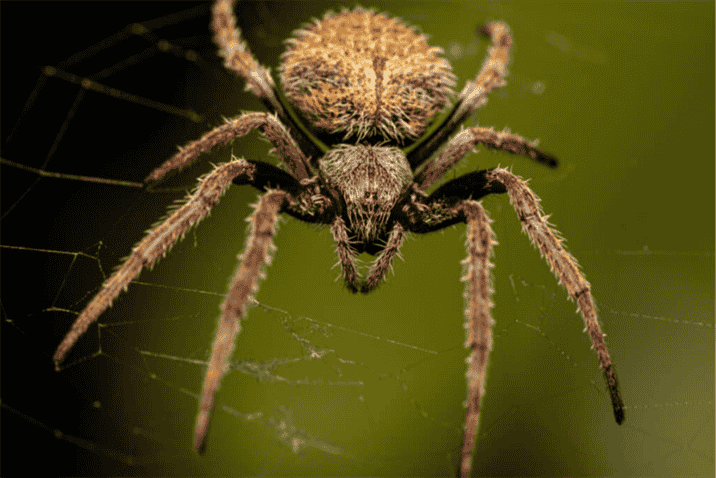
Louisiana’s most commonly found spider species include the brown recluse, black widow, wolf spider, and orb weavers. However, many lesser-known spider species are equally fascinating and essential to the local ecosystem.
Spiders of Louisiana play an important role in Louisiana’s ecology, serving as predators that help control insect populations and maintain a healthy balance within the ecosystem. They also serve as an essential food source for other animals, such as birds and small mammals.
One unique aspect of spider diversity in Louisiana is the presence of several endemic species, meaning they are found nowhere else in the world. One such species is the Louisiana Purseweb Spider, which is only found in a few small areas of the state and is considered endangered.
Spiders of Louisiana diversity in Louisiana is a testament to the incredible biodiversity found within the state. From venomous species to harmless garden spiders, each species plays a unique role in the state’s natural heritage and reminds us to preserve and understand our natural world.
What is the Most Venomous Spider Species in Louisiana?
The most venomous spider species in Louisiana is widely considered to be the black widow. These spiders of Louisiana are known for their shiny black color and the distinctive red hourglass shape on their abdomens. Black widows are known to be highly venomous, and their bites can be potentially dangerous to humans.
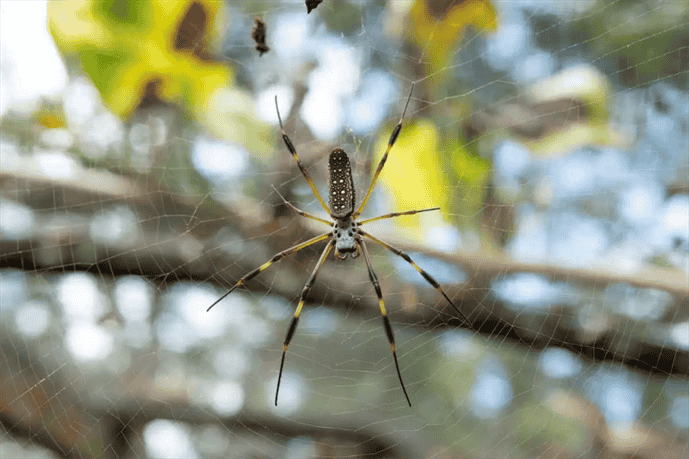
Black widows are typically found in the dark, quiet areas such as wood piles, sheds, and crawl spaces. They are most active at night and will often hide during the day. Black widow bites are relatively rare, as these spiders of Louisiana are not aggressive and will typically only bite if they feel threatened or disturbed.
Symptoms of a black widow bite can vary, including sharp pain, muscle cramps, and difficulty breathing. In severe cases, black widow bites can cause nausea, fever, and seizures. You must seek medical attention immediately if you suspect a black widow spider has bitten you.
Despite their reputation as venomous spiders of Louisiana, black widows serve an essential role in the ecosystem by preying on other insects and helping to control their populations. They are also a necessary part of Louisiana’s natural heritage and remind us of the incredible biodiversity within the state.
It is important to note that while black widow spiders of Louisiana are highly venomous, they are not typically aggressive and usually only bite if they feel threatened or disturbed. Proper caution and awareness make it possible to coexist with these fascinating and vital creatures in Louisiana’s natural environment.
Do All Spiders in Louisiana Build Webs?
No, not all spiders of Louisiana build webs. While web-building is an expected behaviour among many spider species, many species do not build webs or use them in a limited capacity.
Some spiders of Louisiana, such as wolf and jumping spiders, are active hunters that rely on their speed and agility to catch prey. These spiders of Louisiana do not build webs, instead using their keen senses and quick reflexes to stalk and capture their game.
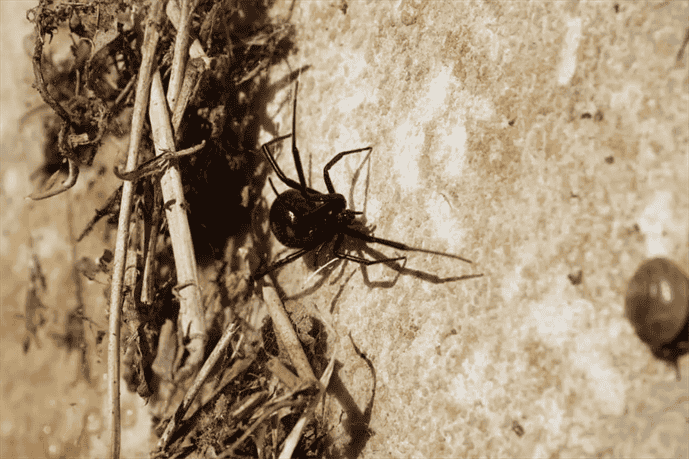
Other spider species in Louisiana, such as crab and ambush spiders, use camouflage to hide and ambush their prey. These spiders of Louisiana may build small silk retreats but do not use webs to capture prey like traditional web-building spiders.
Even among the web-building spiders of Louisiana, there is a wide diversity of web-building behaviors. For example, orb weavers spin intricate webs to catch flying insects, while sheet web spiders spin webs on the ground to capture crawling insects. Some spiders, such as the bolas spider, use a unique technique to dangle a sticky ball of silk to attract and catch moths.
The variety of spider behaviors and hunting strategies in Louisiana is a testament to the incredible diversity of the state’s spider populations. Each species plays a unique role in the ecosystem, and studying their behaviour and biology can provide valuable insights into the workings of Louisiana’s natural environment.
How do Spiders in Louisiana Contribute to the State’s Ecosystem?
Spiders of Louisiana play an important role in Louisiana’s ecosystem and contribute to it in various ways. One of their primary functions is as predators, helping to control populations of insects and other arthropods. They are among the most crucial insect predators in the state and can help to prevent the people of pests that damage crops and gardens.
Spiders of Louisiana are also an important food source for many other animals, such as birds, lizards, and small mammals. Without spiders, these animals would struggle to find enough food, and this could lead to imbalances within the ecosystem.
Another critical role that spiders of Louisiana’s ecosystem: recycling organic matter. Many spider species, such as the wolf spider, feed on dead insects and other arthropods, helping break down organic matter and recycle it into the soil.
In addition to these ecological functions, spiders are essential environmental health indicators. They are sensitive to changes in habitat quality and can serve as early warning signals for environmental disturbances such as pollution or habitat loss. By studying spider populations in Louisiana, scientists can gain insights into the ecosystem’s health and make informed decisions about conservation and management.
The contributions of spiders to Louisiana’s ecosystem are vast and varied. From controlling pest populations to recycling organic matter, these fascinating creatures play an important role in maintaining the health and balance of the state’s natural environment.
What is The Largest Species of Spider Found in Louisiana?
The largest species of spider found in Louisiana is the Carolina wolf spider (Hogna carolinensis), also known as the giant wolf spider. As its name suggests, this species is a wolf spider known for its impressive size and strength.
Carolina wolf spiders of Louisiana are typically brown or grey and can grow up to 2 inches in body length, with a leg span of up to 4 inches. They have large, powerful jaws and can deliver a painful bite if threatened.

Despite their intimidating size and appearance, Carolina wolf spiders are not typically aggressive and will generally try to avoid contact with humans. They are most active at night and usually hunt for prey on the ground, using their speed and agility to catch insects and other arthropods.
Carolina wolf spiders of Louisiana are found throughout much of the southeastern United States, including Louisiana. They prefer open habitats such as fields, meadows, and forests and can often hide under rocks or debris during the day.
While the Carolina wolf spider is undoubtedly an impressive creature, it is essential to note that it plays a vital role in Louisiana’s ecosystem. As a predator, it helps to control populations of insects and other arthropods, contributing to the health and balance of the state’s natural environment.
The Carolina wolf spiders of Louisiana are a fascinating and essential species in Louisiana’s diverse spider fauna. While its large size and powerful appearance may be intimidating, it is a valuable member of the state’s natural community and an essential contributor to the functioning of its ecosystems.
How Can you Identify a Brown Recluse Spider in Louisiana?
Identifying a brown recluse spider (Loxosceles reclusa) in Louisiana can be challenging, as this species can be easily confused with other similar-looking spiders. However, a few key features can help you identify a brown recluse spider if you encounter one.
One of the most distinctive features of the brown recluse spider is its colouration. As its name suggests, this spider is typically brown, with a characteristic violin-shaped marking on its cephalothorax. However, it’s important to note that not all brown recluse spiders have this marking, so colouration alone is not a reliable identifier.
Another key feature of the brown recluse spider is its eye arrangement. This species has six eyes arranged in three pairs, with the pairs forming a semicircle on the spider’s head. This contrasts with most other spiders with eight eyes arranged in two rows.
The legs of the brown recluse spiders of Louisiana are also a valuable feature for identification. The legs are long and thin and are covered in fine hairs. The legs are uniform in colouration and do not have any distinct markings.
It’s important to note that other spiders in Louisiana can be easily confused with the brown recluse spider, such as the wolf spider and the cellar spider. If you are unsure whether a spider is a brown recluse, it’s best to err on the side of caution and avoid contact with it.
If you suspect you have encountered a brown recluse spider in Louisiana, seeking medical attention is essential if you experience severe pain, swelling, or blistering symptoms. Brown recluse spider bites can be serious and may require medical intervention to prevent complications.
Identifying a brown recluse spider in Louisiana can be challenging. Still, by paying attention to critical features such as colouration, eye arrangement, and leg morphology, you may be able to distinguish this species from other similar-looking spiders. If in doubt, it’s best to seek the advice of a professional entomologist or pest control specialist.
Are There Any Endangered Spider Species in Louisiana?
Louisiana is home to a diverse array of spider species, but unfortunately, many face survival threats. While no spider species are listed as federally endangered in Louisiana, several species are considered at risk and may need conservation efforts.
One such species is the Louisiana cave spider (Pimoa Louisiana), found only in a small area of the state’s piney woods region. This spider is known to inhabit caves and other underground spaces and is particularly vulnerable to habitat destruction and disturbance. The Louisiana cave spider is listed as a species of concern by the U.S. Fish and Wildlife Service, indicating that it may be at risk of becoming endangered in the future.
Another spiders of Louisiana species in Louisiana that are considered at risk is the Florida blue tarantula (Aphonopelma seemanni). While this species is not native to Louisiana, it has been introduced to the state and is known to occur in the wild. The Florida blue tarantula is listed as a species of concern in Louisiana and several other states where it has been introduced.
In addition to these species, many other spider species in Louisiana may face threats to their survival due to habitat loss, climate change, and other factors. Researchers and conservationists need to continue to study these species and work to protect them and their habitats.
While no federally endangered spider species exist in Louisiana, several species may be at risk and need conservation efforts. Understanding and protecting these species can help ensure Louisiana’s diverse spider fauna continues to thrive for generations.
How do Spider Populations in Louisiana Vary by Region?
The spider populations in Louisiana vary significantly by region, partly due to the state’s diverse range of habitats and ecosystems. From the bayous and wetlands of the southern coast to the piney woods and prairies of the north, each region of Louisiana is home to a unique mix of spider species.

In the southern part of the state, characterized by a humid subtropical climate, spider populations are remarkably diverse. This region is home to a variety of web-building spiders of Louisiana, including orb weavers, cobweb spiders, and hunting spiders, such as wolf spiders and jumping spiders. Some of the most common spider species in this region include the yellow garden spider (Argiope aurantia), the spiny orb weaver (Gasteracantha cancriformis), and the Carolina wolf spider (Hogna carolinensis).
Moving northward into the piney woods region of central Louisiana, spider populations become somewhat less diverse but still contain a variety of species. This region is home to many hunting spiders, including the boldly-patterned marbled orb weaver (Araneus marmoreus) and the spiny-backed orb weaver (Gasteracantha cancriformis).
In the northernmost part of the state, the spiders of Louisiana populations are dominated by grassland and prairie species. These spiders are adapted to this region’s drier and more open habitats. They include species such as the bold jumping spider (Phidippus audax) and the brown recluse spider (Loxosceles reclusa).
Spiders of Louisiana populations in Louisiana vary significantly by region, with each state offering a unique mix of species and habitats. By understanding these regional differences, researchers and conservationists can work to protect and conserve Louisiana’s diverse spider fauna for future generations.
What is The Most Common Spider Species Found in Louisiana Homes?
The most common spiders of Louisiana homes is the southern house spider (Kukulcania hibernates), also known as the “Texas brown spider.” This spider is native to the southeastern United States and is commonly found in residential areas throughout Louisiana, particularly in the warmer months.
Southern house spiders of Louisiana are typically brown or grey and can grow up to 2 inches in leg span. They are commonly found in dark, secluded areas such as basements, crawl spaces, and attics and often build messy webs in corners or against walls.
While southern house spiders are generally harmless to humans, they can be a nuisance when they invade homes in large numbers. In addition, some people may experience mild skin irritation or allergic reactions if bitten by this species.
Another common spider species found in Louisiana homes is the brown recluse spider (Loxosceles reclusa). While this species is not as common as the southern house spider, it is still frequently encountered in residential areas throughout the state. Brown recluse spiders are known for their venomous bite, which can cause various symptoms, including pain, swelling, and tissue damage.
To prevent spiders of Louisiana infestations in homes, it’s essential to keep living spaces clean and free of clutter and to seal up any cracks or gaps that spiders could use to enter the home. Regular vacuuming and dusting can also help to remove spider webs and prevent spiders from establishing themselves in the house. If a spider infestation does occur, it may be necessary to contact a pest control professional to help remove the spiders safely and effectively.
FAQs
Are there Venomous Spiders in Louisiana?
There are several species of venomous spiders in Louisiana, including the brown recluse and the black widow—awareness of these species and taking precautions when doors are open is essential.
How Can I Identify a Spider?
Spiders can be identified by their color and shape. Most spiders in Louisiana are smaltinynging from a few millimillimetres few centimetres in length. They can be black, brown, or a variety of other cocoloursThey can also have a variety of shapes, from round to elongated.
What do Spiders Eat?
Spiders eat various sects and other arthropods, including flies, beetles, and moths. They use multiple methods to capture their prey, including webs, ambush, and active hunting.
Conclusion
Spiders are an impessentialrt to the Louisiana ecosystem. They are found in a vavariousitats, from wetlands to forests, and in urban and rural areas. Louisiana is home to a wide variety of spiders, including some of the most venomous species in the world. Being aware of these species and taking precautions outdoors is essential. By understanding the habitats, and identification of spiders in Louisiana, we can better appreciate and protect these fascinating creatures.



